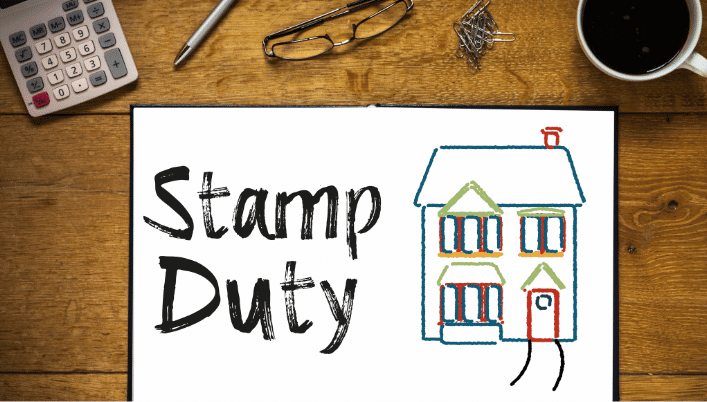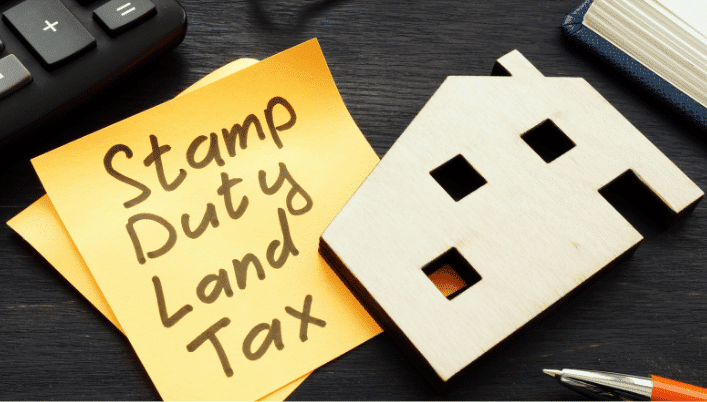
Embark on a journey into the Rental Stamp Duty Calculator world in Singapore – a vital tale of tax responsibility and legal harmony.
As you step into renting, imagine Rental Stamp Duty as your guardian, ensuring tenants contribute their share to Singapore’s tax revenue.
Calculated based on rent and lease duration, this duty is essential when budgeting for a new home or investment.
Key Takeaways
- Definition of Rental Stamp Duty: Rental stamp duty is a tax imposed by the Inland Revenue Authority of Singapore (IRAS) on rented properties. It’s paid by tenants or lessees and calculated based on rent and lease period.
- Importance of Compliance: It’s legally required for tenants to pay rental stamp duty. Non-payment can lead to penalties and legal consequences. Understanding obligations is crucial to comply with the law.
- Responsibility: Tenants or lessees are responsible for paying rental stamp duty. Landlords are not liable for this payment.
- Stamp Duty Calculation: Rental stamp duty is calculated using a percentage of the rent and the lease period. Rates differ for various factors like property type and lease duration.
- Tenancy Agreement: A tenancy agreement is a legal contract outlining terms between a landlord and tenant. It’s crucial for understanding rights and responsibilities.
- Lease Period’s Influence: Lease period affects stamp duty calculation. Longer leases lead to higher rental values and, consequently, higher stamp duty.
- e-Stamping Process: Paying rental stamp duty online via e-Stamping is convenient and accurate. It simplifies payment and ensures compliance with the law.
- Penalties for Non-Compliance: Late payment of rental stamp duty results in additional fees, fines, and legal actions. Non-compliance can lead to eviction and legal consequences.
- Affordability and Investment Impact: Stamp duty affects rental affordability. Higher stamp duty makes certain properties less affordable. It also impacts rental property investments by reducing potential yields.
- Expert Advice: Seek professional advice for accurate calculations and advice on minimizing stamp duty expenses. Explore exemptions and reliefs to reduce costs.
Introduction to Rental Stamp Duty in Singapore

What is rental stamp duty?
Rental stamp duty is a tax imposed by the Inland Revenue Authority of Singapore (IRAS) on renting properties in Singapore.
It is payable by the tenant or lessee and is calculated based on the rental amount and lease period.
The purpose of rental stamp duty is to ensure that tenants contribute to the tax revenue in Singapore.
Why is rental stamp duty important?
Rental stamp duty is essential as it is a legal requirement for tenants to pay it when entering into a rental agreement.
Failure to pay the stamp duty can result in penalties and legal consequences.
Tenants must understand their obligations and fulfill them to comply with the law.
Who needs to pay rental stamp duty?
The tenant or lessee is responsible for paying the rental stamp duty in Singapore.
Tenants need to consider this additional cost when budgeting for their rental expenses.
Landlords are not liable for the payment of rental stamp duty.
Understanding Stamp Duty: What It Is and Why It’s Important

What is stamp duty?
Stamp duty is a tax imposed on certain legal documents, including rental agreements, to make them legally valid.
It is a form of tax collected by the government to generate revenue.
Stamp duty is applicable in many countries, including Singapore.
How is stamp duty calculated?
Stamp duty is calculated based on the rental amount and lease period.
The stamp duty rates differ depending on various factors, such as the type of property and the lease duration.
It is essential to accurately calculate the stamp duty payable to ensure compliance with the law.
What are the stamp duty rates for rental properties?
The IRAS determines the stamp duty rates for rental properties in Singapore.
For a lease of 4 years or less, the stamp duty rate is 0.
4% of the total rental amount for the lease period.
IRAS’s stamp duty calculator can help you determine the exact amount payable.
Exploring Rental Agreements: Tenancy Agreements and Lease Periods

What is a tenancy agreement?
A tenancy agreement is a legally binding contract between a landlord and a tenant.
It outlines the terms and conditions of the rental arrangement, including the rights and responsibilities of both parties.
A tenancy agreement is an essential document when renting a property in Singapore.
What is a lease period?
A lease period refers to the duration for which the rental agreement is valid.
It is typically stated in the tenancy agreement and can vary depending on the landlord’s and tenant’s mutual understanding.
The lease period is an essential factor in calculating the stamp duty payable.
How does the lease period affect stamp duty calculation?
The longer the lease period, the higher the total rental amount and, consequently, the higher the stamp duty payable.
It is essential to consider the duration of the lease period when estimating the stamp duty cost.
How to Calculate Rental Stamp Duty: A Step-by-Step Guide

Step 1: Determine the monthly rental amount
The first step in calculating rental stamp duty is determining the monthly rental amount agreed upon in the tenancy agreement.
This amount will be multiplied by the number of months in the lease period.
Step 2: Calculate the total rental amount for the lease period
Once you have the monthly rental amount, multiply it by the months in the lease period.
This will give you the total rental amount for the lease period, which is used to calculate the stamp duty payable.
Step 3: Find the applicable stamp duty rate
Refer to the stamp duty rates provided by IRAS to find the applicable rate for your rental property.
Multiply the total rental amount by the stamp duty rate to calculate the stamp duty payable.
The resultant amount is the stamp duty you need to pay.
Factors Influencing Stamp Duty Calculation for Rentals

Does the type of property affect stamp duty calculation?
Yes, the type of property can impact the stamp duty calculation.
Different types of properties may have different stamp duty rates or exemptions.
It is essential to consult the IRAS or use a rental stamp duty calculator to identify the applicable stamp duty for your specific property.
Are there any exemptions or reliefs available for rental stamp duty?
Yes, certain exemptions and reliefs are available for rental stamp duty in Singapore.
For example, no stamp duty is payable if the rental property is an HDB flat and the lease period is less than 14 days.
Knowing any applicable exemptions or reliefs is essential to minimize the stamp duty cost.
What are the Additional Buyer’s Stamp Duty (ABSD) rates for rental properties?
The Additional Buyer’s Stamp Duty (ABSD) rates for rental properties are separate from the rental stamp duty rates.
ABSD is a tax imposed on specific categories of buyers, such as foreigners or entities, acquiring residential properties.
The rates and conditions for ABSD vary and should be considered when calculating the overall tax liability of rental properties in Singapore.
Key Components of Stamp Duty Calculation: Property Price and Lease Duration

Understanding the importance of property price in stamp duty calculation
The property price is a significant factor in stamp duty calculation.
As the property price increases, the stamp duty payable also increases.
This is because the stamp duty is a percentage of the property price.
How lease duration affects the stamp duty payable
The lease duration is another factor that influences the stamp duty payable.
The longer the lease duration, the higher the stamp duty amount.
This is because a longer lease duration implies a higher rental value, which results in higher stamp duty payable.
Calculating stamp duty based on property price and lease duration
You can use a stamp duty calculation tool or follow a stamp duty calculation formula to calculate the stamp duty payable.
The formula considers the property price and the lease duration, providing you with the accurate stamp duty amount.
Differentiating Between Rental Stamp Duty and Buyer Stamp Duty

What is rental stamp duty, and how does it differ from buyer stamp duty?
Rental stamp duty is a tax imposed on tenants for the lease agreement of a property.
It is payable by the tenant and is calculated based on the property price and lease duration.
On the other hand, buyer stamp duty is a tax imposed on a property buyer and calculated based on the property price.
Understanding the implications of rental stamp duty for tenants
As a tenant, knowing the implications of rental stamp duty is essential.
It is an additional cost that needs to be considered when budgeting for a rental property.
Understanding how rental stamp duty is calculated can help tenants plan their finances accordingly and avoid surprises.
Comparing rental stamp duty rates with buyer stamp duty rates
The rates for rental stamp duty and buyer stamp duty differ.
Rental stamp duty is calculated at a flat rate of 0.
4% of the total rent for the entire lease duration.
On the other hand, buyer stamp duty rates vary depending on the property price and the buyer’s residency status.
Stamp Duty Rates for Different Rental Property Types
How stamp duty rates vary for residential rental properties
For residential rental properties, the stamp duty rates are calculated based on the average annual rent.
The stamp duty payable is 0.4% of the average annual rent multiplied by the lease duration, subject to a maximum cap.
Stamp duty rates for commercial rental properties
The stamp duty rates for commercial rental properties are also calculated based on the average annual rent.
However, the stamp duty payable is 0.4% of the average annual rent multiplied by the lease duration, with no maximum cap.
Calculating stamp duty for industrial rental properties
Industrial rental properties have their stamp duty rates.
The stamp duty payable is a percentage of the total rent for the entire lease duration, subject to a maximum cap.
Rental Stamp Duty Exemptions and Special Cases
Exploring exemptions from rental stamp duty
Some lease agreements may qualify for rental stamp duty exemptions.
These exemptions are typically applicable in government leases or leases related to specific industries or organizations.
Tenants should check if their lease agreement falls under any exemption category.
Special cases where rental stamp duty may be reduced or waived
In certain situations, rental stamp duty may be reduced or waived.
For example, if the rental property is used for charitable purposes or the tenant is a non-profit organization, the stamp duty amount may be reduced or waived.
However, specific eligibility criteria must be met to qualify for such reductions or waivers.
Understanding the eligibility criteria for rental stamp duty exemptions
To avail of rental stamp duty exemptions, tenants must meet specific eligibility criteria.
These criteria vary depending on the type of exemption sought and are usually outlined by the government.
Tenants should consult the relevant authorities or seek professional advice to determine their eligibility for exemptions.
Calculating Additional Buyer’s Stamp Duty (ABSD) for Rentals
What is Additional Buyer’s Stamp Duty, and how is it relevant for rentals?
The Additional Buyer’s Stamp Duty is a tax imposed on specific categories of buyers, including foreigners and entities, purchasing residential properties in Singapore.
While ABSD is primarily applicable to property buyers, it also has implications for tenants, especially if the property being rented is subject to ABSD.
Calculating ABSD for foreign tenants and entities
If a foreign tenant or an entity is renting a property subject to ABSD, they may be required to pay an additional amount as part of the rental agreement.
The ABSD amount payable varies depending on the residency status of the tenant or the type of entity involved.
Understanding the impact of ABSD on rental property investments
The ABSD significantly impacts rental property investments, especially for foreign buyers or entities.
Tenants must consider the ABSD implications when renting a property, as it may affect the affordability or attractiveness of specific rental options.
Importance of Compliance: Paying Rental Stamp Duty on Time
Paying stamp duty on time to meet legal requirements
It is essential to pay rental stamp duty on time to fulfill the legal requirements set by the rental stamp duty legislation.
Failure to comply with these regulations can lead to severe consequences such as fines, penalties, and legal actions.
To avoid complications, tenants and landlords must ensure timely payment of stamp duty.
Consequences of non-compliance with rental stamp duty regulations
Non-compliance with rental stamp duty regulations can have severe implications for tenants and landlords.
Tenants may face legal consequences, eviction notices, and difficulties in future rental agreements if they fail to pay the required stamp duty.
Similarly, landlords can face fines, legal actions, and reputation damage for not correctly enforcing stamp duty compliance.
How to calculate stamp duty for rental agreements accurately
Calculating stamp duty for rental agreements accurately is crucial to avoid discrepancies or errors.
The stamp duty rates for leases can vary depending on several factors, such as the monthly rent, the duration of the lease, and whether it is a commercial or residential property.
To ensure accurate calculations, it is recommended to use a reliable stamp duty calculator that takes into account all the relevant variables.
This will ensure compliance with stamp duty regulations and the precise payment of the required amount.
The Process of Paying Rental Stamp Duty Online through e-Stamping
Understanding the e-Stamping process for rental agreements
The e-Stamping process has simplified the payment of rental stamp duty by allowing tenants and landlords to pay online.
This digital platform eliminates the need for physical paperwork and provides a convenient and secure way to complete stamp duty transactions.
It involves using an electronic stamp certificate that serves as proof of payment.
Benefits of using e-Stamping for rental stamp duty payments
There are several benefits of using e-Stamping for rental stamp duty payments:
- It saves time and effort as the entire process can be completed online without the need to visit any physical offices.
- It ensures accuracy in calculating stamp duty as the online platform incorporates the latest stamp duty rates and brackets.
- It provides a digital record of the stamp duty payment, making it easier for tenants and landlords to keep track of their compliance.
Step-by-step guide for paying rental stamp duty online
To pay rental stamp duty online, follow these simple steps:
- Access the e-Stamping portal or website.
- Select the option for rental stamp duty payment.
- Enter the required details, such as the monthly rent, the duration of the lease, and the property type.
- The system will automatically calculate the stamp duty amount payable based on the provided information.
- Proceed to make the payment using the available online payment methods.
- Upon successful payment, download the electronic stamp certificate as proof of payment.
Implications of Late Payment and Penalties for Rental Stamp Duty
Understanding the penalties for late payment of rental stamp duty
It is essential to be aware of the penalties associated with late payment of rental stamp duty.
The penalties may vary depending on the jurisdiction and the specific rental stamp duty legislation.
Generally, late payment can result in additional fees, fines, and interest charges on the unpaid amount.
These penalties can significantly increase tenants’ and landlords’ overall stamp duty costs.
Consequences of repeatedly late rental stamp duty payments
Repeatedly late rental stamp duty payments can have severe consequences for tenants and landlords.
In addition to the earlier penalties, tenants may face difficulties finding future rental accommodations as landlords may view them as unreliable and non-compliant.
On the other hand, landlords may face problems attracting tenants and maintaining a positive reputation in the rental market.
Steps to rectify late payment issues and avoid penalties
If you have a deadline for rental stamp duty payment, it rectifying the issue and avoiding any further penalties is essential are some steps you can take:
- Contact the relevant authorities or the stamp duty office to explain the situation.
- Pay the outstanding stamp duty amount as soon as possible to minimize additional penalties.
- Keep a record of the payment and any communication with the authorities as evidence of your efforts to rectify the situation.
- Take preventive measures to ensure timely payments in the future, such as setting reminders and utilizing online payment platforms.
Stamp Duty Impact on Rental Property Affordability and Investment
Calculating stamp duty costs for rental properties
Calculating the stamp duty costs for rental properties is essential for tenants and landlords to understand the financial implications.
The stamp duty amount payable is typically a percentage of the annual or monthly rent, depending on the local stamp duty regulations.
Higher the rent, the higher the stamp duty cost.
Therefore, it is essential to consider stamp duty expenses when evaluating the affordability of a rental property.
Examining how stamp duty affects rental property affordability
Stamp duty directly impacts the affordability of rental properties as it adds to the overall cost for tenants.
The higher the stamp duty amount, the higher the monthly rental expense.
This can make specific properties less affordable for tenants, especially those with limited budgets or specific income constraints.
Landlords should also consider the impact of stamp duty on rental property affordability when setting rental prices.
Impact of stamp duty on rental property investments
The stamp duty on rental properties can significantly impact the viability of rental property investments.
Higher stamp duty costs can reduce the potential rental yield and affect the return on investment for landlords.
It is crucial for landlords to carefully evaluate the stamp duty implications before making any investment decisions in the rental property sector.
Expert Advice: Maximizing Benefits and Minimizing Costs of Rental Stamp Duty
Essential tips for minimizing rental stamp duty expenses
Minimizing rental stamp duty expenses requires careful planning and consideration of various factors.
Here are some essential tips:
- Explore rental properties with lower monthly rents to reduce the stamp duty amount payable.
- Consider negotiating rental terms, such as more extended lease periods, to distribute the stamp duty cost over a longer duration.
- Stay updated with the latest stamp duty rates and brackets to ensure accurate calculations.
- Utilize stamp duty exemptions or reliefs available for specific rental agreements, such as certain lease agreements or rental properties.
Exploring exemptions and reliefs available for rental stamp duty
Some rental stamp duty exemptions and reliefs may be available depending on the local regulations and the specific circumstances of the rental agreement.
These exemptions and reliefs are designed to provide certain benefits and cost savings to tenants and landlords.
It is essential to consult the rental stamp duty legislation or seek professional advice to fully understand the exemptions and reliefs and determine if they apply to your rental agreement.
Consulting experts for professional advice on rental stamp duty
Given the complexity of rental stamp duty regulations and calculations, it is advisable to consult experts for professional advice.
Tax consultants, real estate agents, or legal professionals specializing in rental property matters can provide valuable insights and guidance on rental stamp duty.
They can ensure compliance with the regulations, maximize benefits, and minimize costs associated with rental stamp duty.
Conclusion
Welcome to the intricate world of rental stamp duty in Singapore, where every lease agreement carries the weight of financial responsibility and legal compliance.
As you’ve journeyed through these informative sections, you’ve uncovered the crucial details shaping this vibrant city-state’s rental landscape.
But hold on because this is just the beginning of your exploration!
Imagine embarking on the path to understanding the pivotal role rental stamp duty plays in property transactions.
Think about its power in shaping tenant-landlord relationships and the financial considerations it adds to your monthly rental expenses.
The intricacies of property types, lease periods, and calculation methods have unfolded, painting a comprehensive picture of what lies ahead.
Frequently Asked Questions
What is a rental stamp duty calculator?
How do I pay stamp duty for a rental property?
How can I calculate the amount of stamp duty payable?
Enter the relevant details, such as the monthly rent, duration of the lease, and tenant’s nationality, and the calculator will provide you with the amount of stamp duty payable.
Do I need to pay stamp duty if I rent a property?
What is Tenant's Stamp Duty (TSD)?
How much stamp duty do I need to pay as a tenant?
The stamp duty rates are calculated on a graduated scale, with higher rates applying for longer lease durations and rental amounts.












